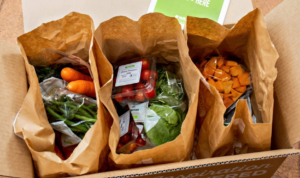The analysts at Sharesunderten give the stock the benefit of the doubt by taking a modest position. If the results disappoint, we can quickly withdraw. However, if the optimism that prevails in our team proves justified and the price rises, we will reassess our strategy. After conversion to euros, the price of the stock is €1.58, and we buy 400 shares. Don’t forget that we are currently analyzing more promising stocks for our portfolio; so make sure you leave enough financial room for the other opportunities that are coming.
The energy transition takes time, effort and money. On the British stock exchange, Centrica shares have had a 2024 stock market year to forget as quickly as possible. After a weaker period in the autumn, the price of this energy giant recovered in the last weeks of last year to just below the levels of 1 January 2024. These are therefore challenging times for an energy company like this. The suppliers of natural gas and electricity are all involved in the energy transition, in other words the transition to sustainable energy sources. The investments in green energy cost a lot of money, without any guarantee of success at the end of the day. Centrica has promised better results in the future, but will have to keep that promise. Pending improvement in the figures, we are taking a half position with this share. The chances of a significant increase in the share price in the short or medium term will only increase when the first swallow proves that summer has arrived.
Profile
The UK electricity sector has undergone major changes in recent years, with a significant reduction in electricity generation from fossil fuels such as coal and an accelerated shift to renewables. This transition period is still in full swing, leaving the energy sector in choppy waters. The UK government has set an ambitious target of fully decarbonising the energy sector by 2035. This includes deploying up to 50 gigawatts (GW) of offshore wind by 2030, 70GW of solar capacity by 2035 and up to 24GW of nuclear capacity by 2050.
Some of the journey has already been completed. The UK has more than halved the amount of electricity it generates from fossil fuels, but gas still accounts for the largest share of the country’s energy supply at 28%. A recent report found that by 2024, the UK’s electricity supply will be cleaner than ever, with wind and solar power reaching their highest ever output.
Centrica operates in this rapidly changing environment. Centrica plc operates as an integrated energy company in the UK, Ireland and a number of other countries through subsidiaries including British Gas Services & Solutions, British Gas Energy, Centrica Business Solutions, Bord Gáis Energy, Energy Marketing & Trading and others. It supplies gas and electricity to residential, commercial, industrial and small business customers, including associated services. Centrica has grown to be the only truly vertically integrated energy company in the UK, making it a central player in the energy sector’s transition to Net Zero.
Numbers
Centrica did not report quarterly results, so the latest we have are for the first half of 2024, when the company said it delivered a good financial performance in a more normalised environment. Adjusted operating profit for the period was £1.0bn, taking into account the unwinding of unrealised hedges from 2023 and a write-down or impairment of its nuclear investments. Free cash flow of £0.8bn (H1 2023: £1.4bn) also reflected dividends received from those nuclear investments.
The balance sheet remained strong, with an adjusted net cash position of £3.2bn compared with £2.7bn at the end of 2023. In line with the progressive dividend policy, the interim dividend per share was increased to 1.5p and the share buyback programme was extended by £200m. This programme is expected to be completed around February 2025. It is not yet certain whether a new programme will be announced.
Strengths
- The energy transition offers long-term opportunities.
- A strong balance sheet provides room for further investments.
- The increase in the interim dividend underlines management’s confidence in its own abilities.
Weaknesses
- A high beta indicates relatively large price fluctuations.
- Limited transparency at Centrica Energy is putting pressure on the share price.
- The ambitious targets for 2028 have yet to be achieved.
Conclusion
The problem with the energy sector in general and Centrica in particular is that there are still many question marks waiting to be answered. Needless to say, the energy transition is an ambitious project that requires heavy investment. Centrica’s green energy-focused growth and investment strategy means that investment needs to be increased significantly in the coming years, to an annual capital expenditure of £600m-£800m by 2028. These types of energy storage projects are crucial to decarbonising the economy and also to protecting the UK from shortages and painful fluctuations in energy prices. The extension of the share buyback programme and the increase in the interim dividend provide some room for optimism. Ultimately, the cool figures should confirm that Centrica is on the right track. The analysts at UBS have given a buy recommendation from the current £1.38 to £1.75 , which offers an upside potential of almost 27%! We give the stock the benefit of the doubt and take a half position. If the figures turn out to be mediocre, we can choose the hare path, but if the optimism is confirmed, the price will run and we can make the next decision.
Centrica in figures
Earnings per share
- 2023: £0,22
- 2024: £0,20
- 2025: £0,26
Course information
- Current rate: £1.38
- Price-earnings ratio: 6.3
- Highest price in the last 12 months: £1,579
- Lowest price in the last 12 months: £1,129
Dividend
- Benefit: £0.04
- Dividend yield: 3%
Financial results
- 2023 revenue: £27.75 billion
- EBITDA: £2.22 billion
- Market capitalisation: £7 billion



